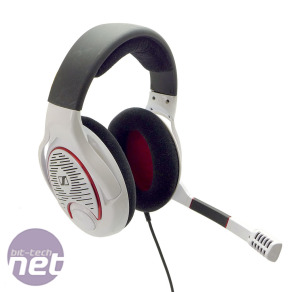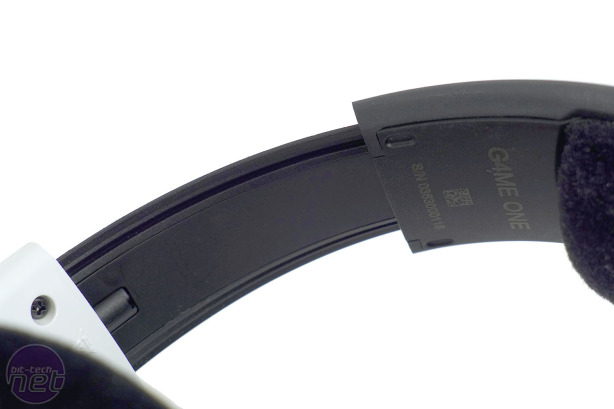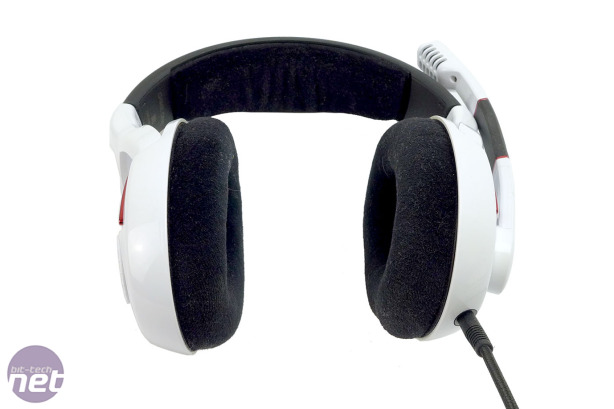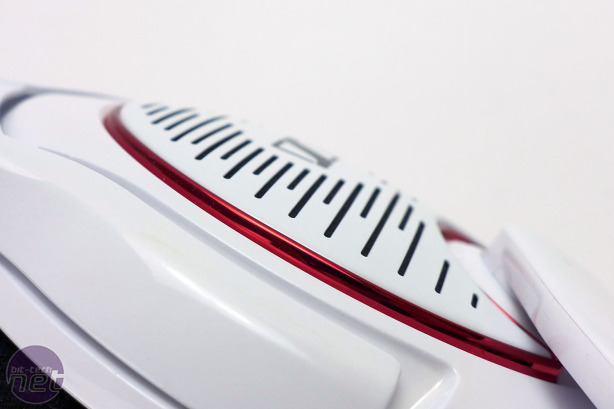
Sennheiser G4ME One
Manufacturer: SennheiserUK Price (as reviewed): £189.99
US Price (as reviewed): $249.99
Sennheiser’s current flagship gaming headsets are the Sennhesier G4ME Zero and Sennheiser G4ME One. We looked at the closed-back Zero recently and found it offered excellent clarity, comfort and usability but its weak bass delivery wasn’t the most universally appealing – not to mention, it’s pretty pricey too. Now it’s the turn of the slightly cheaper, open-back G4ME One to feel the heat of the spotlight.
Although the chief difference between the Zero and One is the closed-back/open-back acoustic design there are actually a plethora of other little differences between the two very similar looking headsets. Where the Zero offers pleather covered padding and a fold-flat design, the One has plush velvet padding and the earcups are fixed in place. The sound signature of the two is also very different but we’ll talk more on that shortly.
Like the Zero, the Sennheiser G4ME One sports a circumaural earcup design, so the earcups fully enclose the ears, rather than resting on them (supraaural) or in them (intraaural). This makes the headset quite large, though the oval earcup shape means they’re not quite as chunky as the likes of the Roccat Kave and Func HS-260, which use a circular earcup design.
Nonetheless, while the G4ME One can fold flat, the earcups of the Zero are fixed, except for a little bit of movement – 5 or 10 degrees – to allow them to adjust to your head. The obvious reason for this is that the open-back design of the G4ME One marks them out as totally unsuitable for use on your travels so being able to fold flat would be pointless, whereas the closed back design of the G4ME Zero means they block out a bit more external noise, making them more suited for LAN parties and the like. Emphasising this point further is that the G4ME Zero comes with a travel case whereas the G4ME One doesn’t. We’re not entirely sure that makes sense but there you go.
A benefit of this decision – aside from the £10 saving – is that the G4ME One is actually an easier headset to use everyday as it’s much easier to pick up and put on, without having to adjust those rotatable earcups (this may sound like a very nit-picky point but it actually really bugged us when using the Zero that they would flop about all over the place).
 When put down the Zero earcups have an annoying tendency to twist round and flatten themselves. Not so with the One.
When put down the Zero earcups have an annoying tendency to twist round and flatten themselves. Not so with the One. The headband offers around 55mm of extension on each side, which should be plenty to accommodate different size heads. The notched adjustment offers a decent balance between being light enough for easy adjustment and stiff enough so as not to shift while gaming. However, adjusting the headband with the headphones on is next to impossible - you have to remove them to do this.
Like the G4ME Zero the One offers around 30 degrees of movement in the arms that hold the earcups. Here we again see the high build quality that both the G4ME headsets possess, with little rubber nubs offering a bit of padding to stop the arms clattering against the earcups - indeed the whole headset is markedly creak and squeak free. The hinges about the earcups are only plastic this time but seem suitably strong, with the force from several aggressive twists being absorbed by the flexible headband.
A couple of potential downsides on the durability front come in the form of the microphone and cable, both of which are permanently fixed; damage either one and you’re stuffed. Not to mention it means you can’t choose which side to plug them into.
Not that they appear overly vulnerable. The microphone incorporates a flexible section that should absorb most knocks, and it rotates upwards out the way - and auto-mutes when stowed away. Meanwhile the cable, which is a plentiful three metres long, has a secure fitting with plenty of rubber surrounding it to limit the chance of it breaking.
The earcups sport the same slashed design as the G4ME Zero but here the slashes are left open rather than plugged with strips of rubber - there in lies the open-back design.
Another marked difference between the pair is that the One is far easier to 'drive' thanks to its 50Ω impendence compared to the 150Ω of the Zero. This means they can also double as a general set of headphones for use with portable players and phones, whereas the Zero ideally need an additional amp to get the best from them.
This is a passive headset so the cable terminates in a simple pair of colour-coded 3.5mm jack plugs. There's a volume adjustment wheel on the side of the right earcup, which acts to attenuate whatever signal it is fed.
Specifications:
- Colour white
- Wearing style Headband
- Impedance Headphones: 50 Ω
- Connector 2 x 3.5 mm for desktop/laptop
- Frequency response (microphone) 50 Hz - 16,000 Hz
- Frequency response (headphones) 15 Hz – 28.000 Hz
- Sound pressure level (SPL) Headphones: 1168 dB
- THD, total harmonic distortion < 0.1%
- Ear coupling Headphones, around-the-ear, open acoustic design
- Cable length 3 m
- Weight 312g
- Pick-up pattern Microphone: Noise Cancelling
- Sensitivity Microphone: -38 dBV at 94 dBSPL

MSI MPG Velox 100R Chassis Review
October 14 2021 | 15:04













Want to comment? Please log in.